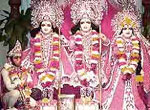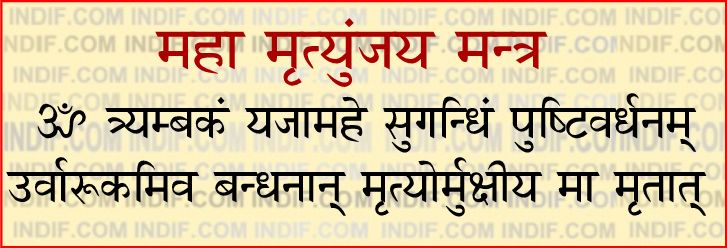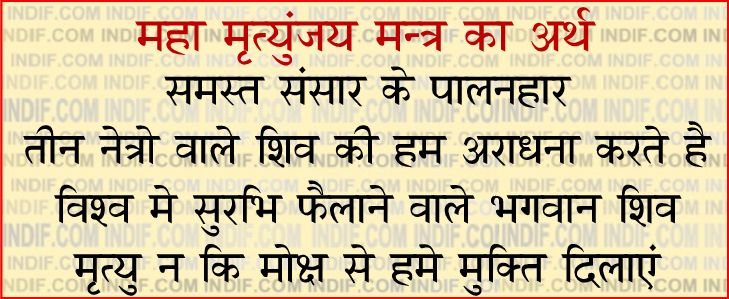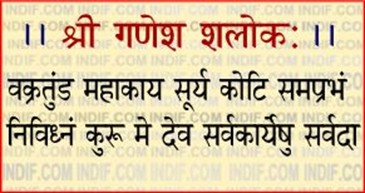The poem is called a chalisa as it contains forty (chalis in Hindi) verses. The structure of the poem is extremely simple and rhythmic, thus making it all the more popular. The poem praises Lord Hanuman’s strength and kindness and recounts the Lord’s great deeds.
दोहा Doha
श्री गुरु चरण सरोज रज नीज मना मुकारा सुधारी, Shree Guru Charana Saroj Raja Nij Man Mukura Sudhari,
अरनाओ रघुवर विमला यशो जो दयाका पहला चारी, Barnau Raghuvar Bimal Jasu, Jo dhayak Phal Chari,
बूढी हीन तनु जानिके सुमिरौ पवन कुमार, Budhi heen tanu janike sumiro pavan kumar,
बल बूढी विद्या देहु मोंही हरहु कलेसा विकार, Bal Buddhi Vidya Dehu Mohi, harahu kalesh vikaar
चालीसा Chalisa
जाया हनुमान गयाना गुना सागर, Jai Hanuman Gyan Gun Sagar,
जाया कपीस तिहूँ लोक उजागर, Jai Kapis Tihun Lok Ujagar,
राम दूत अतुलिउट बल धामा, Ramdoot Atulit Bal Dhaamaa,
अनजानी – पुत्र पवन सुता नामा, Anjani Putra Pavansut naamaa,
महावीर विक्रम बजरंगी, Mahabir Bikram Bajrangi,
कुमति निवारा सुमति के संगी, Kumati Nivaar Sumati Ke Sangi,
कंचना वरना वीराजा सुवेसा , Kanchan Baran Biraaj Subesaa,
कनाना कुण्डला कुंचित केसा, Kanan kundal kunchit kesa,
हाथ वज्र अरु ध्वजा विराजे, Haath Bajra Aur Dhvaja Birajey,
कंधे मूंज जनेवु साजे, Kandhe Moonj Janeu saaje.
संकरा सुवना केसरी नंदन, Shankar Suvan Kesari Nandan,
तेजा प्रताप महा जग बंदन, Tej Pratap Maha Jag Vandan.
विद्यावान गुनी अति चातुर, Vidyavaan Guni Ati Chatur,
राम कजा करिबे को आतुर, Ram Kaj Karibe Ko Atur,
प्रभु चरित्र सुनिबे को रसिया, Prabhu Charittra Sunibe Ko Rasiya,
राम लखना सीता माना बसिया, Ram Lakhan Sita man basyia,
सुक्ष्म रूपा धरी सियाही दिखावा, Sukshma roop Dhari Siyanhi Dikhawa,
विकता रूपा धरी लंका जरावा, Bikat roop Dhari Lank Jarawa,
भीमा रूपा धरी असुर संहारे Bhim roop dhari asur sanhare,
रामचंद्र के कजा सवारे, Ramchandrajee Ke kaaj Savare,
लाया सजीवन लखना जियाये, Laye Sanjivan Lakhan Jiyaye,
श्री रघुवीर हरषी उर लाये, Shri Raghubir harashi ur laye,
रघुपति किन्ही बहुत बडाई, Raghupati Kinhi Bahut Badaai,
कहा भरता समां तुम प्रिया भाई, Tum Mum Priya Bharat Sam Bhai.
सहस वदन तुम्हारो यश गावे, Sahastra Badan Tumharo Jas Gaave,
अस कही श्रीपति कंठ लगावे, Asa kahi Shripati Kanth Laagave.
सनाकादिका ब्रह्मादी मुनीष, Sankadik Brahmadi Muneesa,
नारद सरदा सहित अहीसा, Narad Sarad Sahit Aheesa.’
यामा कुबेर दिगपाला जहाँ त,े Jam Kuber Digpal Jahan Te,
कवि कोविद कही सके कहाँ ते, Kabi Kabid Kahin Sake Kahan Te,
तुम उपकार सुग्रीविएना कीन्हा, Tum Upkar Sugrivahi Keenha,
राम मिलाये राजपद दीन्हा, Ram Milaye Rajpad Deenha,
तुम्हारो मंत्र विभीशाना माना, Tumharo Mantro Bibhishan Maana,
लंकेश्वर भये सबा जगा जन, Lankeshwar Bhaye Sab Jag Jaana,
युग सहस्र योजन पर भानु, Juug Sahastra Jojan Par Bhaanu,
लील्यो ताहि मधुरा फल जानू, Leelyo Taahi Madhur Phal Jaanu,
प्रभु मुद्रिका मेली मुख माहि, Prabhu Mudrika Meli Mukha Maaheen,
जलधि लांघी गए अचरज नही, Jaladhi Langhi Gaye Acharaj Naaheen,
दुर्गम काज जगत के जेते, Durgam Kaaj Jagat Ke Jete,
सुगम अनुग्रह तुम्हारे तेते, Sugam Anugrah Tumhre Tete,
राम दुलारे तुम रखवारे, Ram Duware Tum Rakhavare,
होत आग्न्य पिनु पैथारे, Hot Na Aagya Bin Paisare,
सब सुख लहै तुम्हारी शरण, Sab Sukh Lahen Tumhari Sarna,
तुम रक्षक कहू को डरा न, Tum Rakshak Kaahu Ko Dar naa,
आपना तेजा तुम्हारो आपे, Aapan Tej Samharo Aapei,
तीनो लोक हांका ते कम्पी, Tenau Lok Hank Te Kanpei.
भूत पिसाचा निकट नहीं आव,ेBhoot Pisaach Nikat Nahi Ave,
महाबीर जब नाम सुनावे, Mahabir Jab Naam Sunavei,
नसे रोग हरे सब पीरा, Nasei Rog Hare Sab Peera,
जपत निरंतर हनुमत बीरा, Japat Niranter Hanumant Beera,
संकट से हनुमान चुदवेय, Sankat Te Hanuman Chhudavei,
मन क्रम वचना ध्यान जो लाव,े Man Kram Bachan Dhyan Jo Lavei,
सब पर नामा तपस्वी रजा, Sub Par Ram Tapasvee Raaja,
तीन के कजा सकला तुम सजा, Tinke Kaaj Sakal Tum Saaja,
और मनोरथ जो कोई लावे, Aur Manorath Jo Koi Lave,
तासु अमिता जीवन हल पवई, Soi Amit Jivan Phal Pave.
चारों युग परताप तुम्हारा, Charo Juug Partap Tumhara,
है पारा सीधा जगाता उजियारा, Hai Parsiddha Jagat Ujiyara.
साधू संत के तुम रखवारे, Sadho Sant Ke Tum Rakhvare,
असुर निकंदाना राम दुल्हरे, Asur Nikandan Ram Dulare,
अष्ट सीधी नौ निधि के डाटा, Ashta Siddhi Nau Nidhi Ke Data,
असा वारा दीं जानकी माता, Asa Bar Din Janki Mata,
राम रसायन तुम्हारे पासा, Ram Rasayan Tumhare Pasa,
सादर तुम रघुपति के दस, Sadaa Raho Raghupati Ke Dasa,
तुम्हारे भजन राम को भावी, Tumhare Bhajan Ramko Pavei,
जन्मा जन्मा के दुख बीस रवी, Janam Janam Ke Dukh Bisravei,>
अन्ता काला रघुपति पुरा जाई, Anta Kaal Raghubar Pur Jai,
जहाँ जन्मा हरी – भक्तअ कहाई, Jahan Janma Hari Bhakta Kahai,
और देवता चिट्टा न धरई, Aur Devata Chitt Na Dharai,
हनुमता से यी सर्व सुखा करायी, Hanumant Sei Sarva Sukh Karai,
संकट कटे मिटे सब पीरा, Sankat Kate Mitey Sab Peera,
जो सुमिरि हनुमंत बल्बीरा , Jo Sumirei Hanumant Balbeera,
जय जय जय हनुमान गोसाई, Jai Jai Jai Hanuman Gosai,
कृपा करहु गुरुदेव की नीई, Kripa Karahu Gurudev Ki Naiee,
जो सत् बार पाठ कर कोई, Jo Sat Baar Paath Kar Koi,
छुतही बंदी महा सुख होई , Chhutahi Bandi Maha Sukh Hoi.
जो यह पढ़े हनुमान चालीसा , Jo Yah Padhe Hanuman Chalisa,
होय सिद्धइ सखी गौरीसा , Hoy Siddhi Sakhi Gaurisa,
तुलसीदास सदा हरी चेरा , Tulsidas Sada Hari Chera,
कीजे नाथ ह्रदय माह डेरा .Keeje Nath Hriday Mah Dera.
दोहा Doha
पवन तनया संकट हरन मंगला मूर्ति रूपा, Pavan Tanay Sankat Haran , Mangal Murti Roop.
राम लखन सीता सहित हृदय बसहु सुरभूप, Ram Lakhan Sita Sahit, Hriday Basahu Sur Bhoop.
Meaning of Hanuman Chalisa
With the dust of Guru’s Lotus feet, I clean the mirror of my mind and narrate sacred glory of Sri Ram , The Supreme among the Raghukul. The giver of the four attainments of life.
Knowing myself to be ignorant, I urge you, The son of Pavan! kindly bestow on me strength, wisdom and knowledge, removing all my shortcomings.
Victory of Thee, O Hanuman, Ocean of wisdom and virtue, victory to the Lord of monkeys who is well known in all the three worlds.
Messenger of Ram with enormous strength, you are also known as “Anjaniputra” and the son of the Air God.
Oh Hanuman ! You are valiant and brave, with a body like lightening. You remove darkness of evil thoughts and are a companion of good sense and wisdom.
Shri Hanuman ‘s physique is gold colored. His dress is pretty, wearing ear-rings and his hairs are long and curly.
Shri Hanuman is holding in one hand a lighting bolt and in the other hand a banner with the sacred thread across his shoulder.
Oh Hanuman You are the emanation of ‘SHIVA’ and you delight Shri Keshri. The entire world propitiates.. You are adorable of all.
Oh Hanuman You are the repository of learning, virtue, you are very wise and are keen to do the works of Lord Ram.
You are eager to listen to the narration of Lord Ram’s story and revel on its enjoyment. You are in the hearts of Lord Rama, Sita and Lakshman.
You appeared before Sita in a very small form and spoke to her, while you assumed an huge form and struck terror by setting Lanka kingdom on fire.
O Hanuman with your big form you killed demons of Lanka and performed all acts of lord Ram.
When Hanumanji made Lakshman alive after bringing “Sanjivni” herb Lord Ram hugged you, His heart full of joy.
Shri Ram extolled Hanumanji’s excellence and remarked, “you are as dear to me as my own brother Bharat”
Shri Ram embraced Hanumanji saying: “Let the thousand – tongued ‘sheshnaag’ sing your glories”
The sages, saints, Lord Brahma, Narad and Goddess Saraswati along with Sheshnag the serpent, fail to sing the glories of Hanumanji properly.
What to talk of denizens of the earth like poets and scholars even Gods like Yamraj, Kuber, and Digpal fail to narrate Hanman’s greatness.
Hanumanji! You obliged Sugriva, you united him with Lord Ram and got him the Royal Throne.
It is known all over the universe that by following your advice, Vibhushana became King of Lanka kingdom.
Hanumanji you gulped Lord Sun at distance of thousands miles considering it to be a sweet fruit.
Carrying the Lord’s ring in his mouth, you went across the ocean. There is no wonder in that.
Oh Hanumanji all the difficult tasks of this world is made easy by your grace.
Oh Hanumanji You are guarding the door of Lord Ram’s mercy mansion or His divine abode. No one may enter without your permission.
By your grace one can enjoy all happiness and one need not have any fear under your protection.
When you roar all the three worlds tremble and only you can control your might.
Hanuman’s name keeps all the Ghosts, Demons & evils spirits away.
On reciting Hanumanji’s name all the maladies and pain disappears.
Those who remember Hanumanji in thought, word and deed are well guarded against their odds in life.
Oh Hanuman You are the caretaker of even Lord Rama, who has been hailed as the Supreme Lord and the Monarch of all those devoted in penances.
Oh Hanuman You fulfill the desires of those who come to you.
Oh Hanuman Your magnificent glory is acclaimed far and wide all through the four worlds and your fame is all over the cosmos.
Oh Hanuman You are the saviour of saints and sages and destroys the Demons, you are the darling of Lord Ram.
Hanuman has been blessed with mother Janki to grant to any one any yogic power of eight Sidhis.
Oh Hanuman You hold the essence of devotion to Lord Ram, always remaining His Servant.
Oh Hanumanji! through devotion to you, one comes to RAM and becomes free from suffering of several lives.
After death he enters the eternal abode of Sri Ram and remains a devotee of him, whenever, taking new birth on earth.
You need not hold any other God in mind. Hanumanji will give all happiness.
Oh Powerful Hanuman end the sufferings and remove all the pain from those who remember you.
Hail Hail Hail Lord Hanuman I beseech your Honour to bless me in the capacity of my supreme teacher.
One who recites this Hanuman Chalisa one hundred times becomes free from the bondage of life and death and enjoys the highest bliss at last.
As Lord Shankar witnesses, all those who recite Hanuman Chalisa regularly are sure to be benedicted.
Tulsidas always the servant of Lord prays. “Oh my Lord! You stay within my heart”.
O Shri Hanuman, The Son of Lord Air, Saviour The Embodiment of blessings, stay in my heart with Shri Ram, Laxman and Sita.
 Sri-Ramnavami is dedicated to the memory of Lord Rama. It occurs on the ninth day (navami). The festival commemorates the birth of Rama who is remembered for his preperous and righteous reign. Ramrajya (the reign of Rama) has become synonymous with a period of peace and prosperity.
Sri-Ramnavami is dedicated to the memory of Lord Rama. It occurs on the ninth day (navami). The festival commemorates the birth of Rama who is remembered for his preperous and righteous reign. Ramrajya (the reign of Rama) has become synonymous with a period of peace and prosperity. Some observe a strict fast on this day. The diet of such a person would include potatoes made in any form without haldi (turmeric), garlic, ginger or onion. He can also eat fruit and root vegetables of any kind. Curd, tea, coffee, milk, and water are also permitted
Some observe a strict fast on this day. The diet of such a person would include potatoes made in any form without haldi (turmeric), garlic, ginger or onion. He can also eat fruit and root vegetables of any kind. Curd, tea, coffee, milk, and water are also permitted The Sun is considered to be the progenitor of Rama's dynasty which is called the Sun dynasty (Raghukula or Raghuvamsa, Raghu means Sun and Kula or Vamsa mean familial descendant). Rama is also known as Raghunatha, Raghupati, Raghavendra etc. That all these names begin with the prefix Raghu is also suggestive of some link with Sun-worship. The hour chosen for the observance of the lord's birth is that when the sun is overhead and is at its maximum brilliance. In some Hindu sects, prayers on Ramnavami day start not with an invocation to Rama but to Surya (sun). Again the syllable Ra is used in the word to describe the sun and brilliance in many languages. In Sanskrit, Ravi and Ravindra mean Sun.
The Sun is considered to be the progenitor of Rama's dynasty which is called the Sun dynasty (Raghukula or Raghuvamsa, Raghu means Sun and Kula or Vamsa mean familial descendant). Rama is also known as Raghunatha, Raghupati, Raghavendra etc. That all these names begin with the prefix Raghu is also suggestive of some link with Sun-worship. The hour chosen for the observance of the lord's birth is that when the sun is overhead and is at its maximum brilliance. In some Hindu sects, prayers on Ramnavami day start not with an invocation to Rama but to Surya (sun). Again the syllable Ra is used in the word to describe the sun and brilliance in many languages. In Sanskrit, Ravi and Ravindra mean Sun. 












